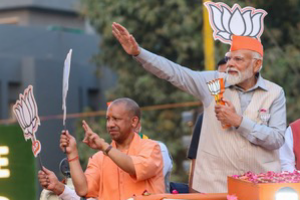Nearly 45.41 per cent women in the age group of 15-49 years have been found iron deficient in Bundelkhand region.
According to the latest National Family Health Survey (NFHS), the national average is 53.8 per cent while that of Uttar Pradesh is 50.1 per cent, which shows that the region is comparatively in a better position though half of the women in this age group are anaemic.
This raises serious concern not only for the health issues but for the women’s mental health issues too.
However, the figures in all the districts of the Bundelkhand region, barring Banda district, have improved from the previous survey of 2015-16.
As per the survey reports, Jhansi has 41.3 per cent anaemic women in this age group while earlier the figure was 51.3 per cent.
Chitrakoot has 46.6 per cent anaemic women, compared to the earlier 61.4 per cent.
Lalitpur now has 38.1 per cent which is an improvement from the previous 49.8 per cent.
The data shows that Chitrakoot and Mahoba districts have performed extremely well and so have the others, except Banda where the figures have increased.
According to experts, anaemia leads to change in behaviour of adolescents. It is also the root cause of anxiety, depression, anger and frequent headaches in them.
“Anaemic girls have low self-esteem and cannot concentrate on their studies. It is important that it should be detected at an early stage by checking haemoglobin which can be improved by medicines and proper diet. It is not that only girls from poor families are anaemic. Free iron supplement medicines and blood check-up facilities are available in all district hospitals, PHCs and CHCs. In addition, regular awareness camps are also being conducted in the schools,” said a senior health official.
He further informed that iron tablets are available in hospitals and also with Anganwadis, ASHA and ANM workers. Tablets are also being made available in schools.
“The red tablet is for pregnant women which are to be taken for 180 days during pregnancy period while the blue tablet is for girls aged between 10-19 years to be taken once a week,” he said.











